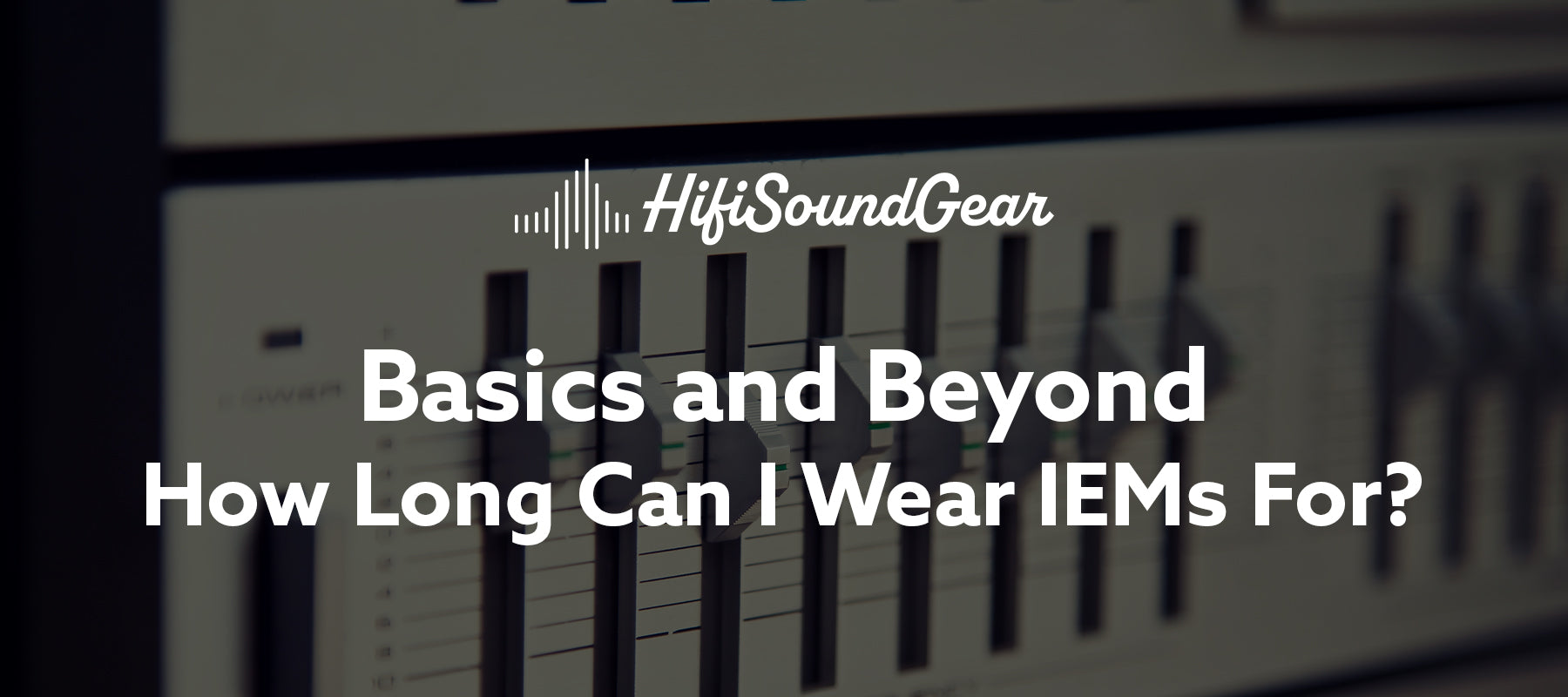
How Long Can I Wear IEMs For?
If you're rocking IEMs (in-ear monitors) for hours on end mixing tracks, gaming, or just vibing to your favorite albums - you've probably wondered: how long is too long?
Time melts away when you've got a pair of premium IEMs delivering that glorious sonic clarity straight into your ear canals. Whether you're rocking IEMs (in-ear monitors) for hours on end mixing tracks, gaming, or just vibing to your favorite albums, you've probably wondered: how long is too long?
Table of Contents
The Uncomfortable Truth About IEMs and Your Ear Canals

IEMs are acoustic overachievers. Unlike over-ear headphones that give your pinnae some breathing room, or earbuds that lazily sit in your concha, IEMs create an airtight seal deep in your ear canal mere millimeters from your eardrum. This proximity is both their superpower and potential kryptonite.
That hermetic seal delivers phenomenal isolation, letting you hear every nuance without cranking the volume. But it also means sound pressure levels (SPL) hit your cochlea with zero acoustic mercy. We're talking about transducers - whether balanced armature, dynamic, or planar magnetic drivers - firing directly down your ear canal like a sonic laser beam.
The Science: How Long Is Actually Safe?

The golden rule? The 60/60 principle: 60% maximum volume for no more than 60 minutes at a time.
But here's where it gets interesting. Volume matters exponentially, not linearly. At 85 dB, you've got about 8 hours of safe exposure. Bump that to 88 dB? You're down to 4 hours. Hit 91 dB? Two hours max. Every 3 dB increase cuts your safe listening time in half.
For context, normal conversation clocks in around 60 dB. A lawn mower? About 90 dB. Many folks listen to IEMs at 95-105 dB without realizing it, which is firmly in the "you're speedrunning hearing damage" territory.
Factors That Affect Your Wearing Duration
Volume reigns supreme, but other variables matter:
IEM fit quality determines both comfort and necessary volume levels. Custom IEMs with perfect canal fit provide better isolation, meaning you need less volume to achieve the same perceived loudness. Universal IEMs with poor seal? You'll unconsciously crank the gain, trading hearing health for audio clarity.
Tip material selection isn't just about sound - it's about ear canal health. Silicone tips are durable but can create pressure points during extended sessions. Foam tips (like Comply) provide superior comfort and isolation but retain moisture like acoustic sponges, creating a bacterial resort in your ear canal.
Music genre matters more than you'd think. Listening to ambient or classical music with massive dynamic range at moderate levels? You could go 3-4 hours safely. But death metal, EDM, or heavily compressed pop music slams your ears with sustained high SPLs - 30-45 minutes max before you're accumulating acoustic trauma.
Warning Signs You're Overdoing It
Your ears communicate in their own language. Listen up:
Temporary threshold shift (TTS) is that muffled, underwater sensation after removing IEMs. If sounds seem quieter or you need the TV louder, your hair cells are fatigued. This can be reversible with rest, but repeated TTS becomes permanent threshold shift then its game over.
Tinnitus, or that delightful ringing, hissing, or buzzing, is your cochlea screaming for mercy. If you're hearing phantom frequencies after IEM sessions, you've crossed a line.
Physical symptoms include ear canal soreness, pressure sensation, increased earwax production (your body's defense mechanism), or the dreaded "IEM headache" from jaw tension and pressure imbalance.
Best Practices for Extended Sessions
Implement mandatory breaks: 20 minutes of rest for every 60-90 minutes of listening. Remove IEMs completely - ambient mode doesn't count. Let your ear canals depressurize and your cochlea recover.
Master your gain staging: If you need more than 70-75% volume on your device, something's wrong. Either your source impedance is mismatched, your IEMs are inefficient, or you're in an environment too loud for IEM use.
Hygiene is non-negotiable: Clean your IEMs daily with isopropyl alcohol. Dirty tips introduce bacteria into the warm, moist environment of your ear canal.
Rotate tip types between sessions to vary pressure distribution. Monday silicone, Wednesday foam.
Professional Perspective: The Studio Standard

Mixing and mastering engineers typically work in 45-minute blocks with 15-minute breaks, cross-referencing between IEMs and studio monitors. This isn't just about ear fatigue - it's about maintaining critical listening accuracy. Fatigued ears lie to you about frequency balance and dynamic response.
Touring musicians face brutal IEM marathons during performances, but the pros use custom-molded IEMs with premium isolation, allowing stage monitoring at 75-80 dB instead of 95-100 dB. They also implement strict "ears off" policies during soundcheck breaks.
The Bottom Line
So, how long can you wear IEMs? With moderate volumes (below 85 dB) and proper fit, 2-4 hours daily is reasonable for casual listeners. Professional use requires strategic breaks every 45-60 minutes. Sleeping with IEMs? Don't even think about it.
Your cochlear hair cells are non-renewable resources. Unlike IEM cables, they're not user-replaceable! Treat them like the precious acoustic sensors they are. Keep volumes reasonable, take regular breaks, maintain hygiene, and listen to warning signs. Because the only thing worse than missing sonic detail in your mix? Missing it permanently because your ears are cooked.
Elevate Your Listening Experience With These Related Articles
Enjoyed this article? Feel free to check out these related topics!

